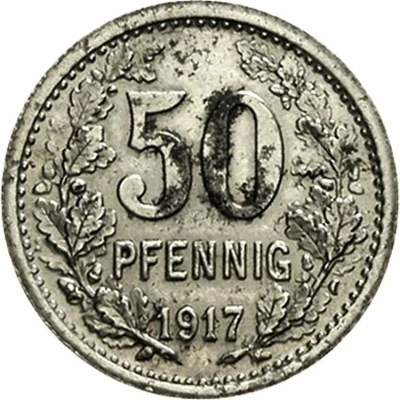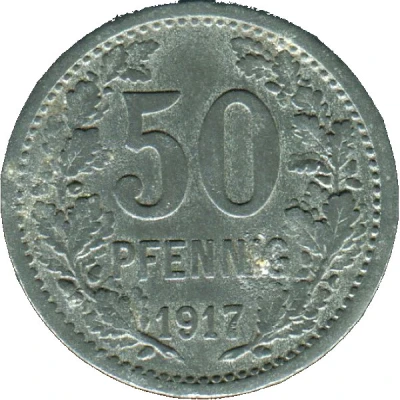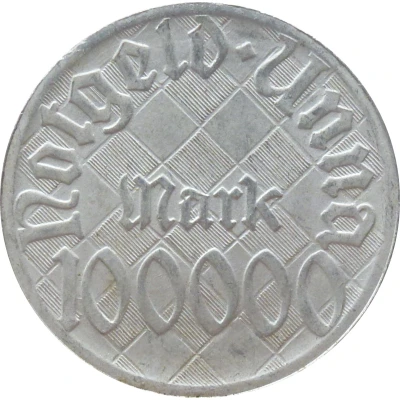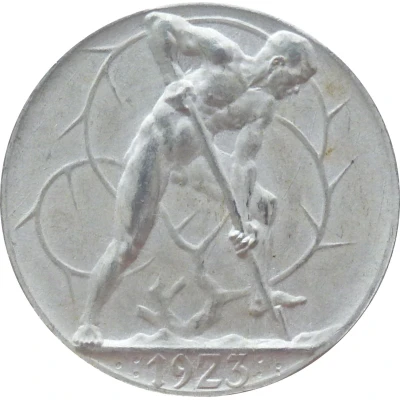


© Teutoburger Münzauktion
50 Pfennigs - Unna
1917 year| Zinc | - | 22.6 mm |
| Issuer | City of Unna (notgeld) (Prussian province of Westphalia) |
|---|---|
| Emperor | William II (Wilhelm II) (1888-1918) |
| Type | Standard circulation coin |
| Year | 1917 |
| Value | 50 Pfennigs (50 Pfennige) (0.50) |
| Currency | Mark (1914-1924) |
| Composition | Zinc |
| Diameter | 22.6 mm |
| Shape | Round |
| Technique | Milled |
| Orientation | Medal alignment ↑↑ |
| Demonetized | Yes |
| Updated | 2024-10-04 |
| Numista | N#355843 |
|---|---|
| Rarity index | 100% |
Reverse
Pearl rim, oak branches left and right with denomination top centered and date below
Script: Latin
Lettering:
50
PFENNIG
1917
Edge
Plain
Interesting fact
The 50 Pfennigs - Unna 1917 coin was issued during a time of economic crisis in Germany, specifically during the hyperinflation period of the 1920s. The coin was made of zinc, which was a cheaper alternative to traditional metals like copper or silver, and was used to reduce the cost of producing coins. Despite its low value, the coin is now considered a rare collector's item and can fetch high prices at auctions.



